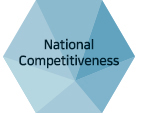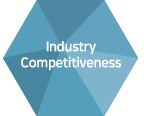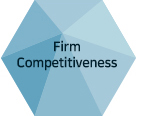

We live in an age where globalization affects directly and indirectly countries, industries, firms, and individuals. At the same time, there is a growing cross-over between East and West which requires holistic perspectives to facilitate prosperity and competitiveness better. Despite the current heightened awareness of and interest in "competitiveness," it has been defined differently across diverse fields and experts. However, an integrated definition has yet to be reached. Moreover, the interpretations of previous rankings on national competitiveness are often misleading due to the fact that they have not been supported by the use of a rigorously developed model or appropriate methodology grounded on systematic credentials of academia and practice.
IPSNC is dedicated to integrating different approaches from East and West that will help develop a better understanding of competitiveness. By adding Eastern experiences and wisdom to the traditions of Western academics, IPSNC aims to provide a more in-depth assessment of competitiveness. Such an approach will show economies, industries, firms, and individuals how they can strategically enhance their position as they engage with varied and complex global challenges.
Unlike previous efforts on competitiveness, our research adopts a different approach by extending Michael Porter’s seminal work on the Diamond Model along two dimensions - scope and source of national competitiveness. By integrating these two dimensions into one framework for evaluating competitiveness, our model offers a more comprehensive view which facilitates a better understanding on competitiveness for both advanced/developing, as well as large/small economies.
The IPSNC annually publishes the National Competitiveness Research (NCR) by conducting statistical analysis for more than 60 economies through combining both hard data and survey data from across the world. Besides the publication of this country/region-level report, we also consult industries, firms, and individual leaders that wish to gain competitiveness in domestic and global contexts.
Hwy-Chang Moon, Ph.D.
Director, IPSNC
Professor Emeritus, Seoul National University
Editor-in-Chief, Journal of International Business and Economy
www.hwychangmoon.com

The National Competitiveness Research (NCR) offers an analysis of the competitiveness of more than 60 countries and regions across the world. Most of the existing studies on national competitiveness ranking by overseas institutions are often unequipped with academic knowledge or pertinent research methodologies. Yet, policymakers and stakeholders closely examine these publications and base their policies and strategies on these findings. Our research takes on a different approach by utilizing the solid theoretical foundation of Michael Porter’s Diamond Model and its extended studies. The determinants for national competitiveness in our research include human and physical factors from both domestic and international perspectives. Therefore, NCR moves away from the advanced economies’ point of view, which has been accepted as the norm and best practice in existing reports and uses a research methodology that is more applicable and pragmatic to all countries.
In addition to the annual competitiveness rankings provided for more than 60 countries and regions, our research offers a series of strategic frameworks known collectively as Measurement, Analysis, Simulation, and Implementation (MASI). This comprehensive approach will be helpful for users in business, government, and academia in analyzing national competitiveness and formulating strategies to enhance their position. Through this added method, our research provides more accurate results in guiding toward the most reliable source of competitiveness.




